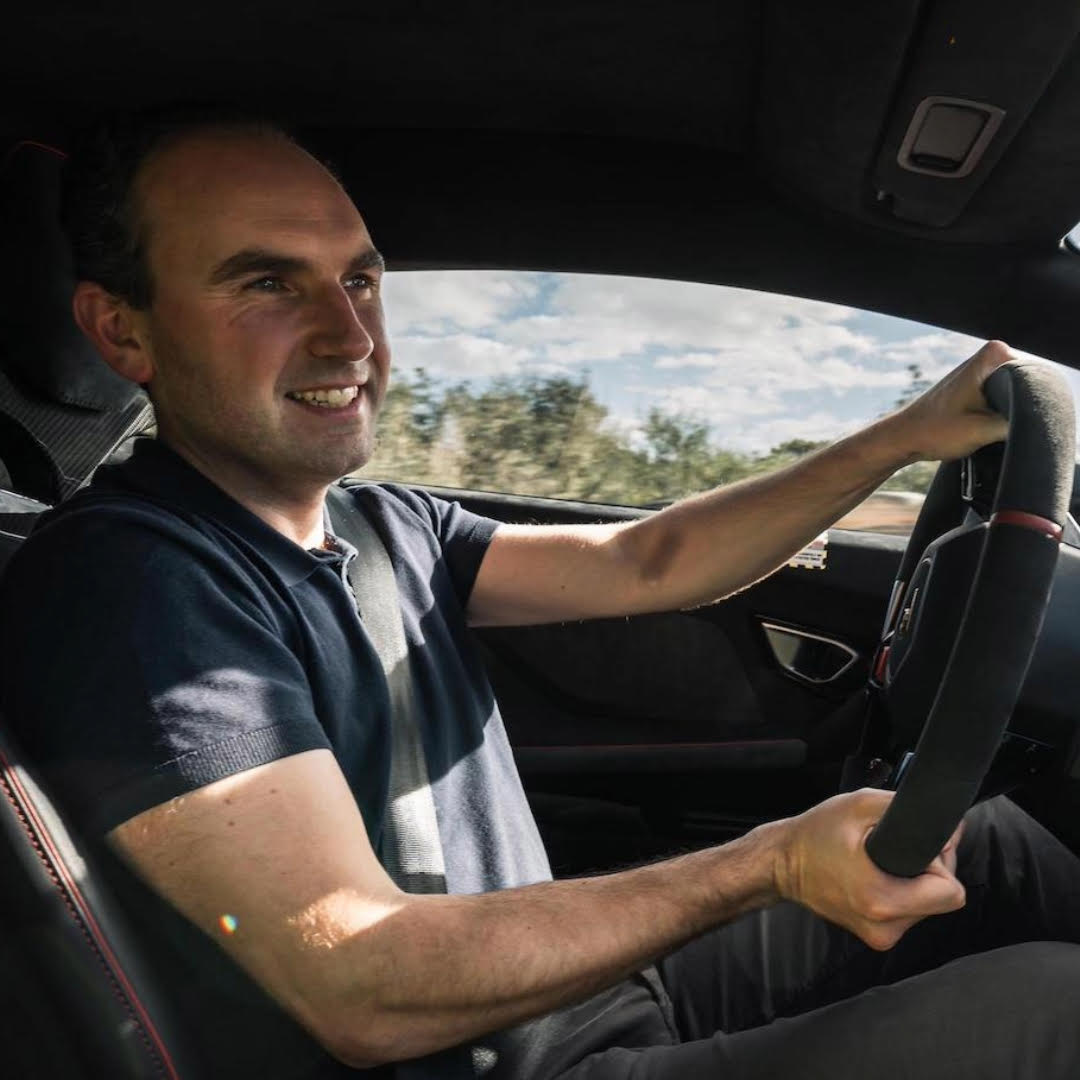Ferrari 12 Cilindri first drive: a sensational tribute to a significant past
The perfect anti-hero to the electric sports car, this V12 Ferrari is a last salute to pure petrol power
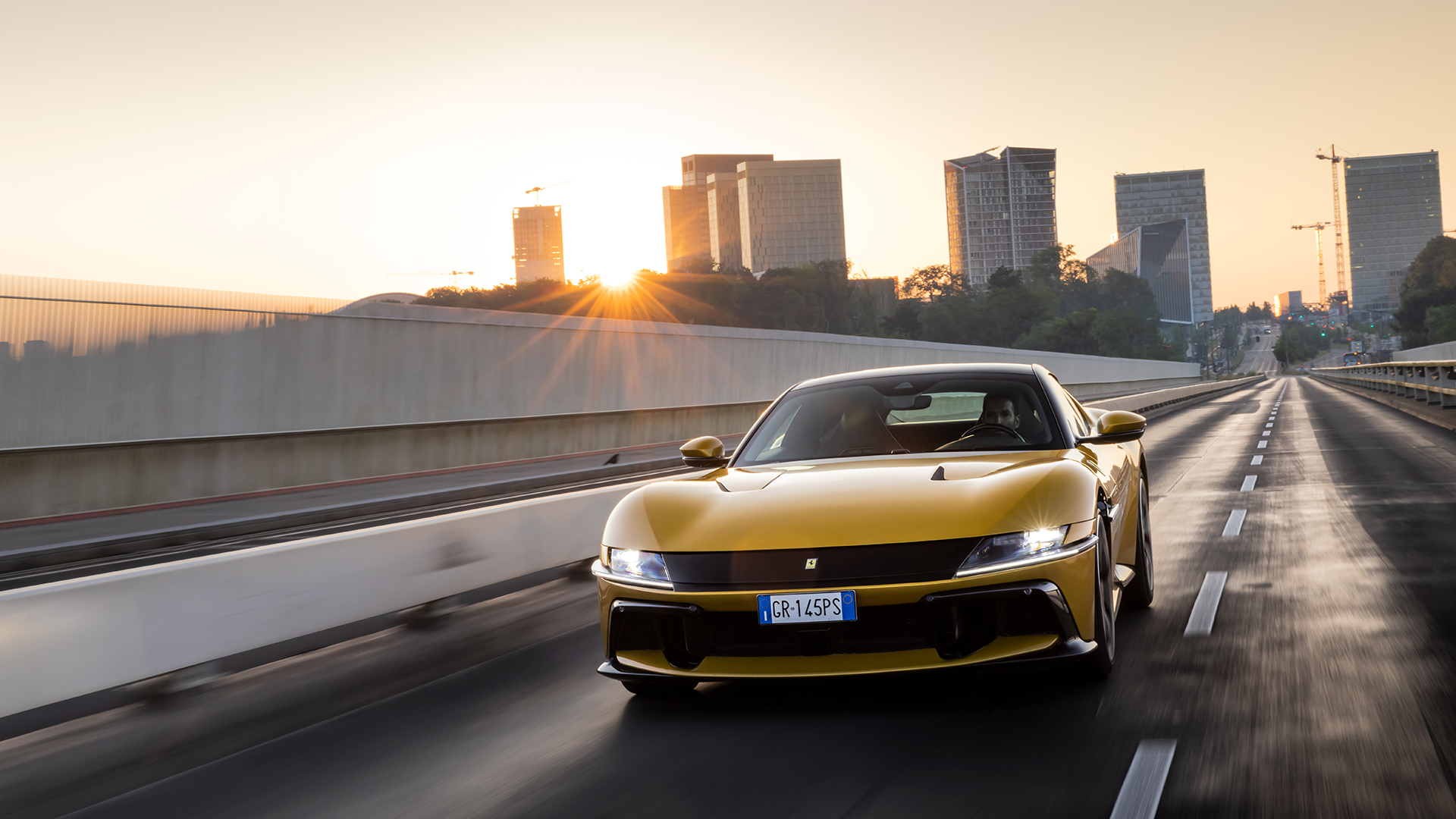

Ferrari's latest prancing horse boldly bucks the current trend for electrified or even hybrid engines, with an unapologetic naturally aspirated V12 under the bonnet.
Called the Dodici Cilindri, or 12 Cilindri – literally translated as 12 Cylinder – Ferrari's all-too-obvious naming strategy suggests this is something of a last blast for the Maranello-based marque, as it celebrates the engine that's powered some of its greatest grand tourer hits.
With a completely different design direction and the promise of more usability than its 812 Superfast predecessor, has Ferrari made the ultimate V12 grand tourer or just a sleek sculpture to commemorate its past as the all-electric era draws closer? Read on to find out.
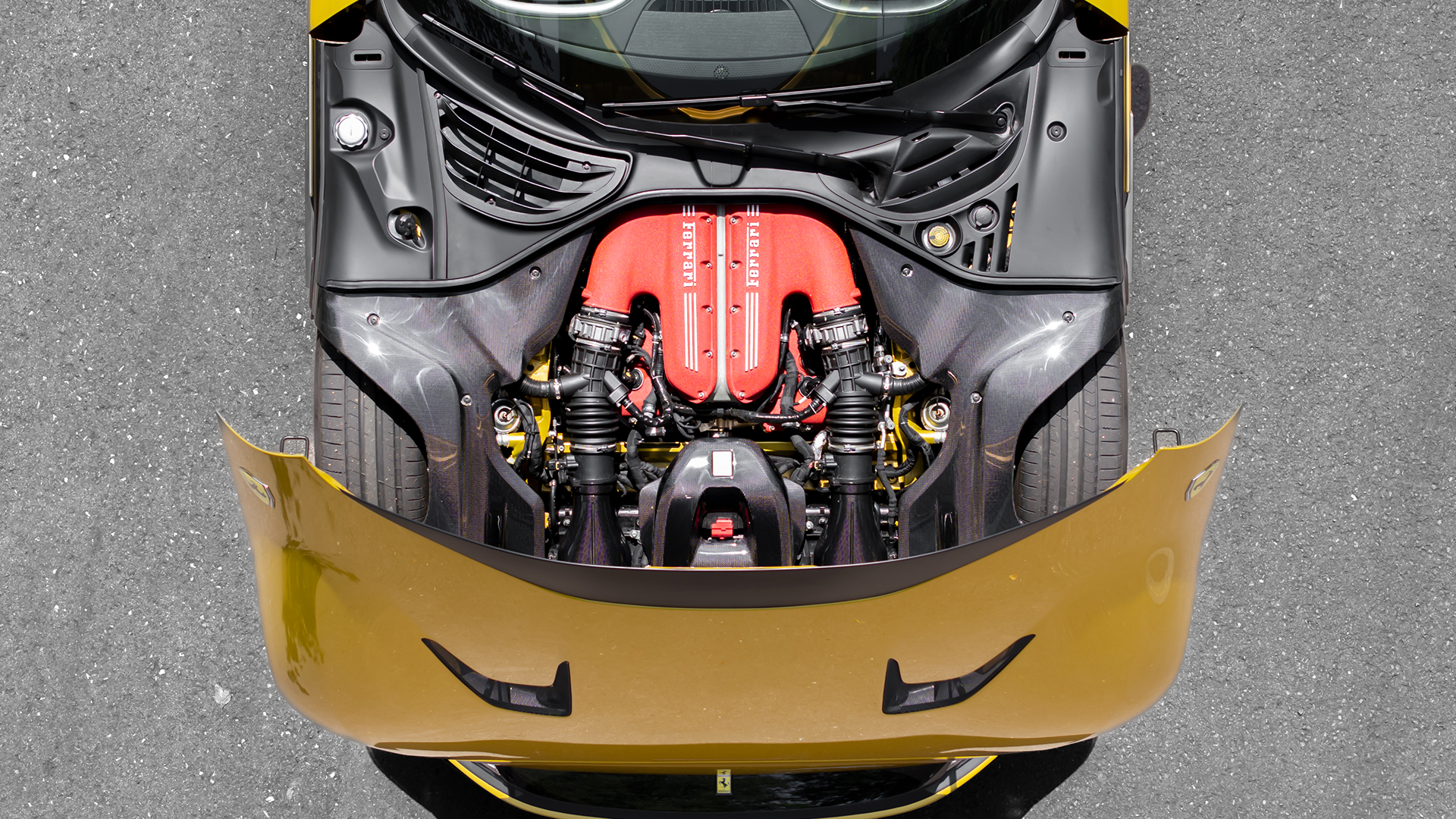
How much is the Ferrari 12 Cilindri?
Prices for the 12 Cilindri start at £336,500 for the coupe and £366,500 for the convertible without options. While that's a hefty price for the latest slice of Ferrari's V12 heritage, most owners will inflate that significantly after indulging in the extensive list of extras. Looking to replace the standard seat set-up for a pair of exquisite but rock-hard carbon fibre racing seats? That will be just short of £10,000. More carbon fibre on the engine cover? Another £8,000 and if you're looking for Ferrari to provide luggage that will fit effortlessly across the back and in the generously sized boot, then prices start from £2,375 per case.
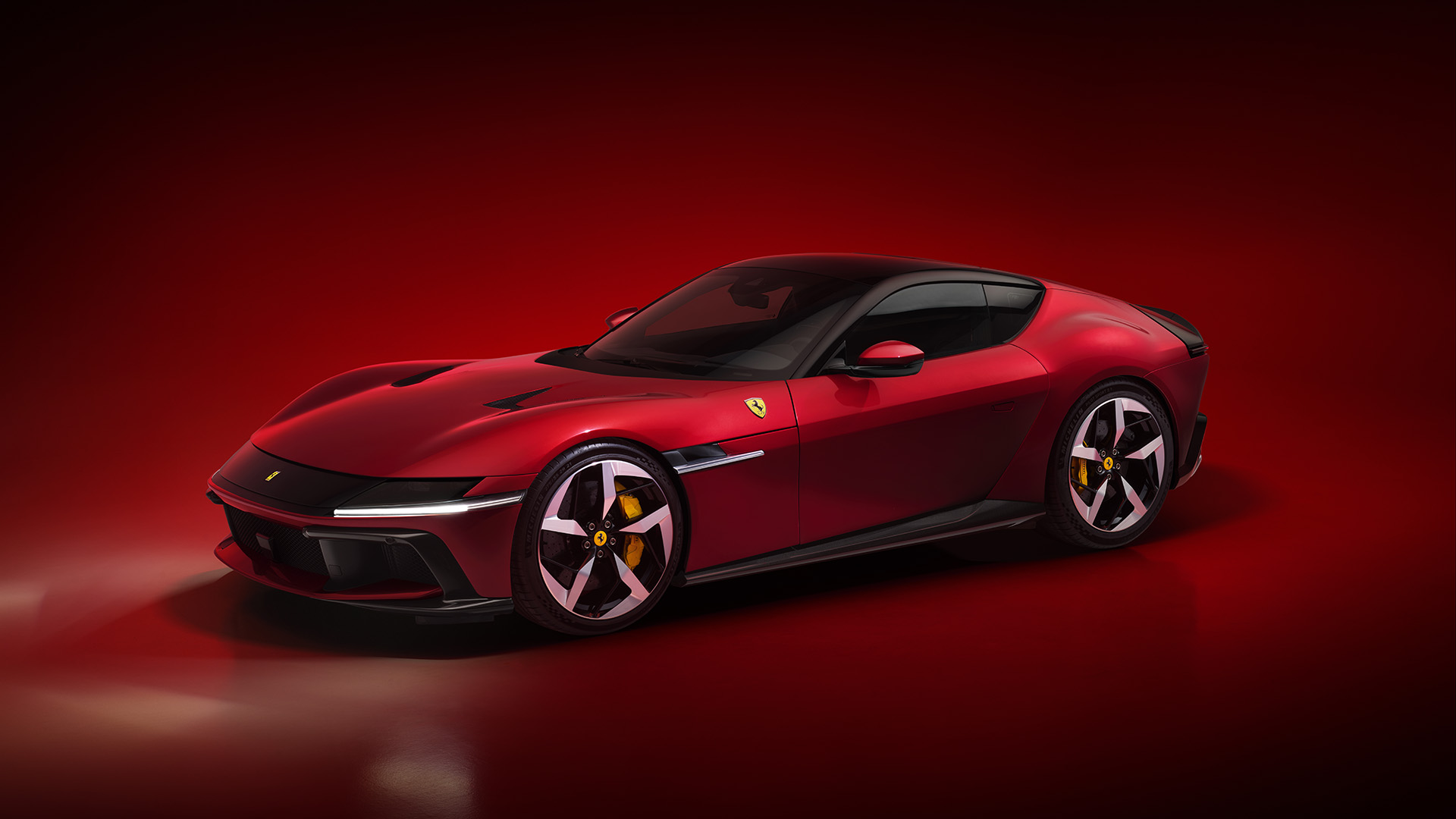
Features and design
"We're dealing here with a car with specific proportions, which we would usually describe as Gran Turismo, with a 12-cylinder, mid-front mounted engine, a long bonnet and a cab pushed all the way down so it's almost perched on the rear wheels," says Ferrari's design boss Flavio Manzoni at the car's launch in Luxembourg. Channeling the spirit of cars like the 250 GT, 275 GTB and the 1970s 365 GTB 'Daytona,' the design boss and his team also took inspiration from more radical elements.
Calling on concept cars like the wedge-shaped Ferrari Modulo from 1970, the 12 Cilindri blends classical styling cues with modern shapes and graphical elements, creating a design that caused a stir and divided opinion when it was first presented in Miami in May, 2024. It’s radically different from the line of cars that went before it but, love it or hate it, the 12 Cilindri certainly makes a visual statement in the supercar market.
On the inside, the 12 Cilindri sports a similar cabin configuration to the V12-engined Purosangue SUV, with the 'dual cockpit' carving out a dedicated space for the driver and the passenger. Leather, metal and Alcantara make up most of the materials inside, which is highly customisable - for a price, of course.
Get all the latest news, reviews, deals and buying guides on gorgeous tech, home and active products from the T3 experts
One significant difference between the 12 Cilindri and its SUV sibling is the addition of a 10.25-inch centre display dedicated to navigation, cabin comfort and climate control functions. The 15.6-inch digital dashboard and novel 8.8-inch passenger display, which gives the passenger information, such as G-Force and speed, mirrors the Purosangue's set up. With a distinct lack of physical buttons, the 12 Cilindri is littered with touch controls, which are tricky to use while on the move.
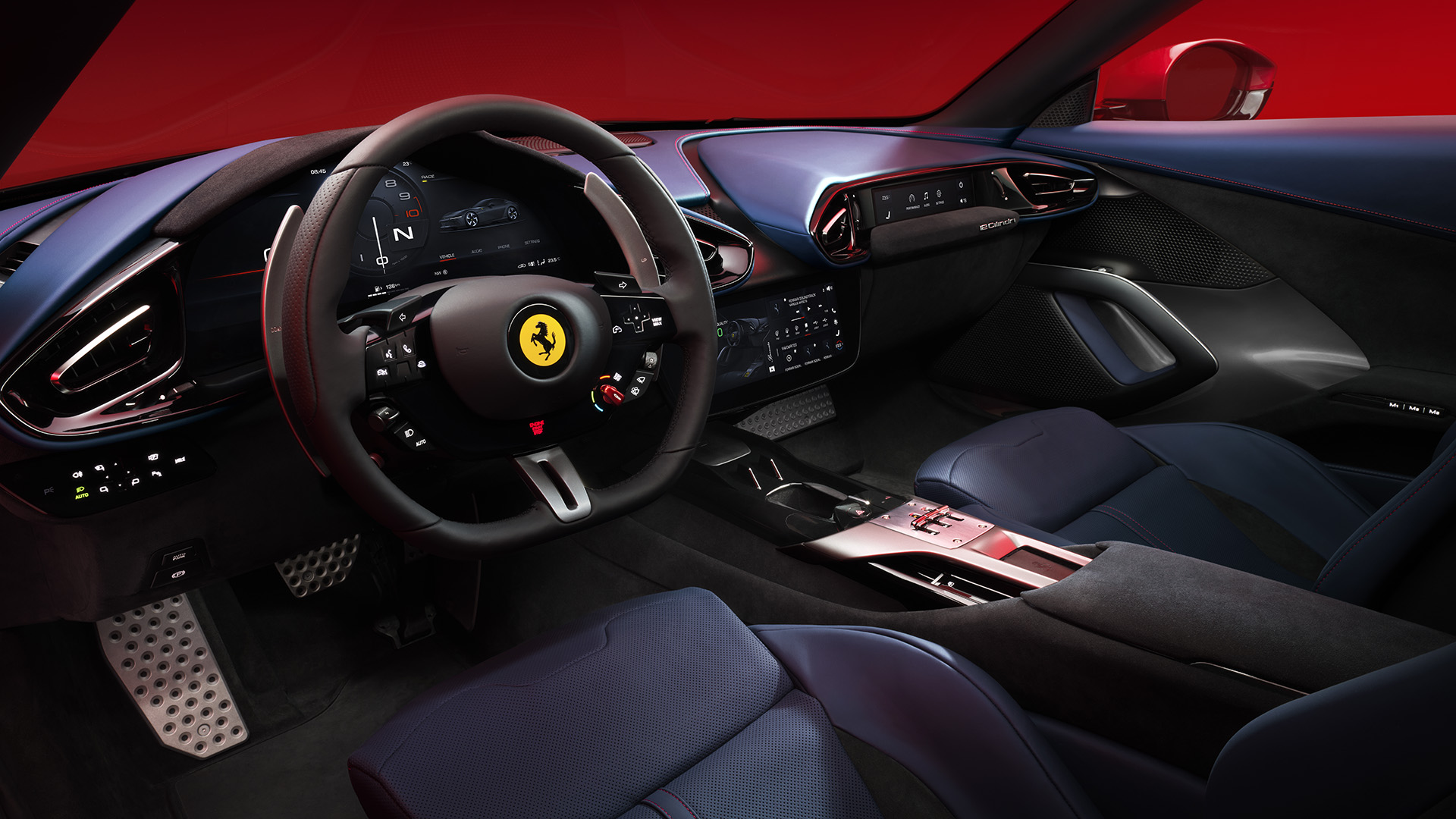
Naturally aspirated V12 and performance
"We consider [the 12-cylinder] so much to be the heart of the car that we named the car after it," says Flavio Manzoni. Despite Ferrari being the last marque standing when it comes to manufacturing a naturally aspirated V12, it's also got one foot firmly in the future, with its plans for its first fully-electric car due to be revealed in 2025. With the V12's days numbered, the 12 Cilindri is a last blast for the engine on which Ferrari built its shining reputation for fast road cars, and its latest model does everything to uphold this.
The 12 Cilindri packs a punch with its 6.5 litre unit derived from the 812 Competzione, that now produces 818 hp and revs to 9250 rpm. Despite covering the 0-60 dash in just 2.9-seconds and topping 210 mph, it is no longer Ferrari's fastest car. That crown has been handed over to the hybrid mid-engined SF90, setting the 12 Cilindri apart from its predecessor, the 812 Superfast, which had the tricky task of being Ferrari's flagship grand tourer but also the fastest car in the range. Removing one of those roles has only benefited the 12 Cilindri, allowing it to blossom into a purebred gran turismo, both in the way it drives and looks.
Ferrari has improved the 812 Competzione power unit and transmission by introducing titanium conrods, as well as lighter pistons and crankshaft, while adding an eighth gear to the DCT 'box, which is 30 percent faster than before.
When it comes to handling, the 12 Cilindri is incredibly agile, despite its size. Rear wheel steering and a trick side slip control system, enabled by a 6D sensor, means the car wraps around corners with ease and handles a variety of different surfaces with confidence.
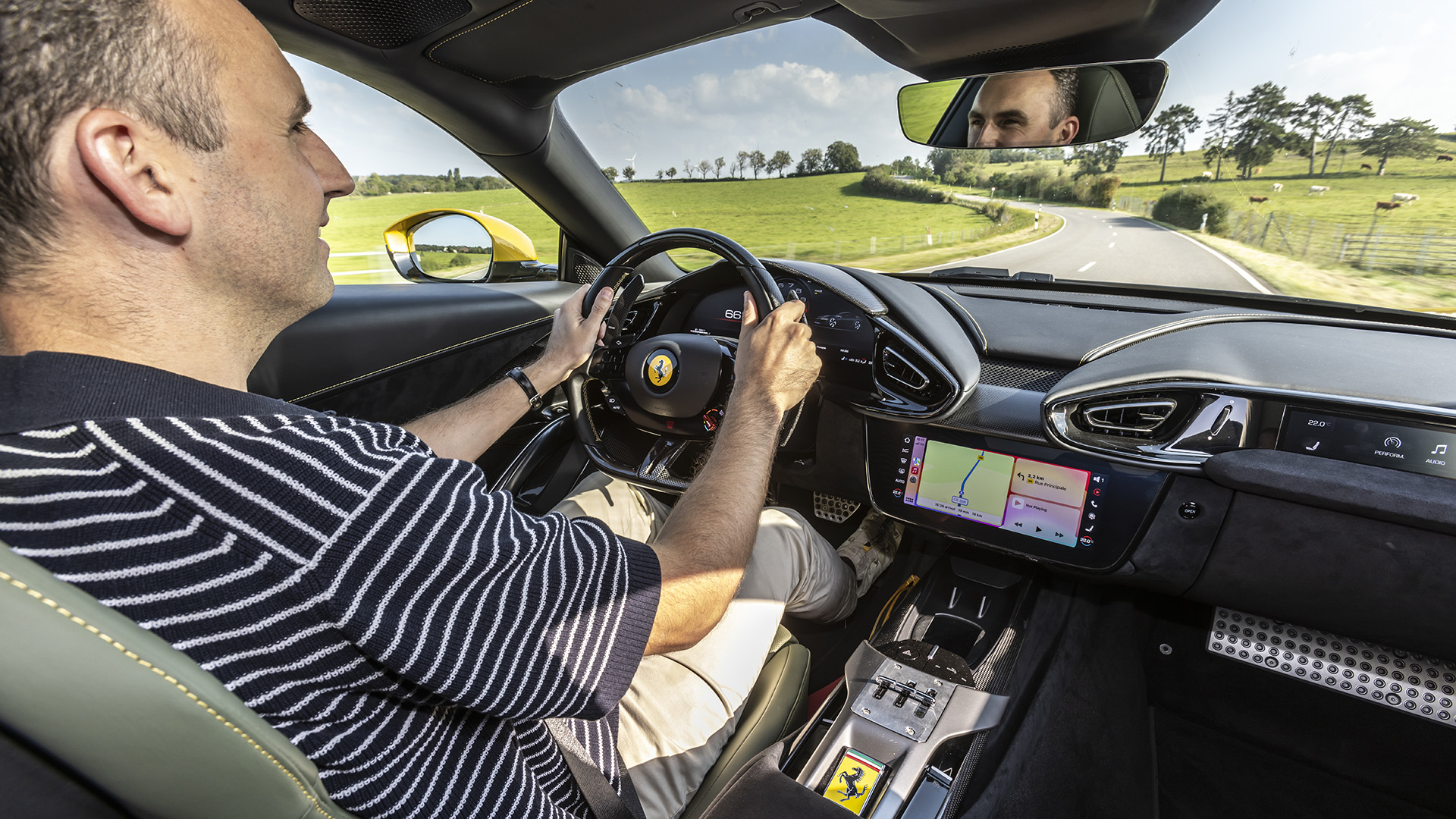
Drive and ride
Ferrari insists that the 12 Cilindri is built for those in search of "an undiluted, pure driving experience," given most owners will be in it for the thrills that come with the 12 Cilindri's screaming V12.
True to the brief, Ferrari has managed to strike a delicate balance between a car that can comfortably cover miles and one that can drift its way around a racetrack if required. Channeling the spirit of the Ferraris driven by gentlemen racers in the 1950s and 60s, who often drove their cars to work during the week and the racetrack at the weekend, the 12 Cilindri is both refined and raucous. In an age dominated by cars that achieve ludicrous speeds with the help of electrification, the sound and feel of a pure, naturally aspirated engine is a rare treat indeed.
With the additional eighth gear, its calmer and able to achieve better range when cruising. There's also a 'soft button,' to make the ride more compliant on longer journeys and massage seats, suggesting this is a car designed to be used for long distances, just as its ancestors were before it.
Despite that, the 12 Cilindri comes alive on the track and the switchback B-roads of Luxembourg. The combustion engine enthusiasts will be delighted to flick the manettino to 'Race', plant the accelerator and feel the car tighten up as the revs build and the noise in the cabin reaches fever pitch.
"When I listen to your 12-cylinder, there's a burst of harmony no conductor could ever recreate," Austrian conductor Herbert von Karajan once reportedly told to Enzo Ferrari. While this is something the marque will struggle to replicate in its electric era, the 12 Cilindri does a very good job of giving Ferrari's beating heart a suitable send-off.

Should I buy a Ferrari 12 Clinidri?
For those looking to lock in an example of a pure, naturally aspirated V12 grand tourer, then look no further than the Ferrari. As the saying goes, 'they don't make them like that anymore,' and this is particularly true for the 12 Cilindri: Ferrari is the only car manufacturer making a naturally aspirated V12 today, so it's really without any rivals when it comes to the hardware powering it.
The closest competitor to the 12 Cilindri looks to be the forthcoming V12 Aston Martin Vanquish, with its 5.2-litre unit producing 823 bhp, albeit taking advantage of twin turbos to achieve its superior power output.
With both cars due to hit the road at a similar time, the decision on which super grand tourer to pick just got a whole lot harder. Italian or British? We'll let you decide.
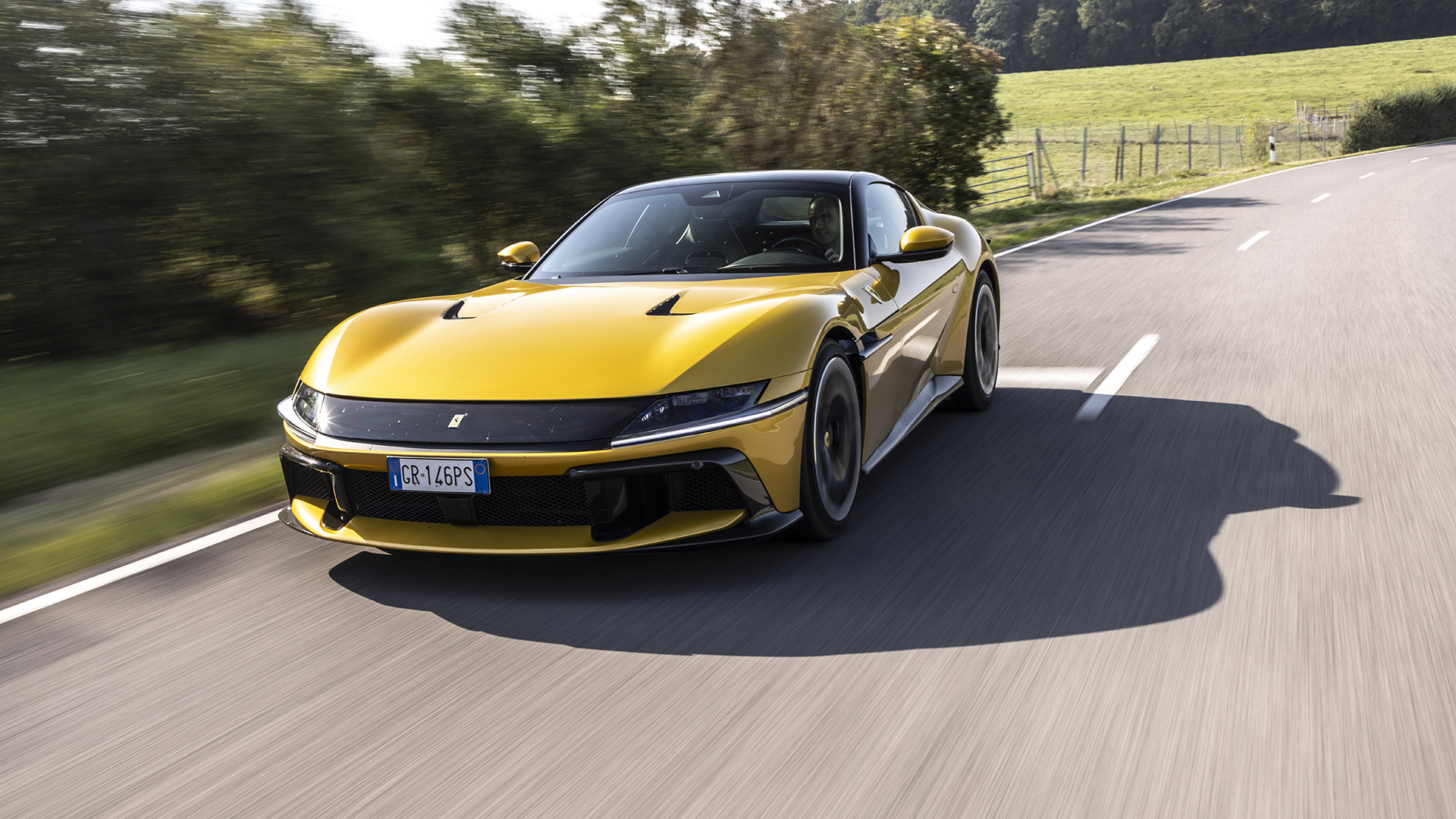
Rory is an experienced freelance journalist covering all things cars, motorsport, tech and transport for the Financial Times, Telegraph, Wallpaper, Top Gear and T3. Regularly quizzing CEOs, racing drivers and engineers on everything from the wheels up, he also test drives the latest cars and greatest classics for news stories, features and reviews. @roryfhsmith
